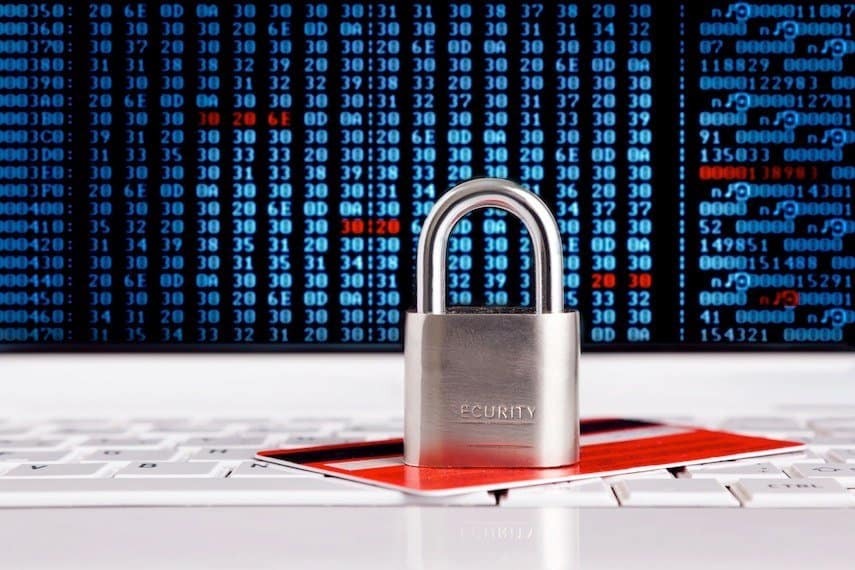What is PCI DSS Compliance?
Confused about PCI DSS compliance? This article will explain PCI DSS and the importance of complying with this important information security standard.
What is PCI DSS?
PCI DSS stands for the Payment Card Industry (PCI) Data Security Standard (DSS). The PCI DSS is a proprietary information security standard that was established in 2004 by the major credit card brands. The standards apply to organizations that handle major branded credit cards, including Visa, MasterCard, American Express, Discover, and JCB. The PCI DSS does not cover private label cards, such as department store credit cards, that are not associated with a major card brand.

The PCI DSS consists of common sense steps that coincide with widely accepted data security best practices. The goals of the PCI DSS standards are to help merchants securely process credit card transactions and prevent fraud.
Who must be PCI DSS compliant? Is PCI DSS compliance required by law?
While PCI DSS is not mandated by U.S. federal law, some states have laws that refer to PCI DSS explicitly or contain equivalent mandated standards. Additionally, the major credit card brands require that all organizations, worldwide, that accept or process their cards be compliant with PCI DSS. If your organization processes, stores, or transmits cardholder data, you are required to be compliant with PCI DSS.
What does PCI DSS compliance entail?
The PCI DSS outlines 12 requirements, each falling under one of six categories, or “goals.” The following is a brief overview of these goals and their corresponding requirements:
Goal No. 1: Build & Maintain a Secure Network
- Organizations must install and maintain a secure network to conduct transactions, including utilizing firewalls that are effective but do not result in undue inconvenience to cardholders or vendors.
- Organizations must not use vendor-supplied defaults for system passwords and other security parameters, as these defaults are widely known by hackers. They should be changed before a system is installed on the network.
Goal No. 2: Protect Cardholder Data
- Cardholder data should not be stored – whether in electronic or paper form – unless absolutely necessary. Magnetic strip and chip data should never be stored. When it is necessary to store cardholder data, it must be stored securely. Primary account numbers (PAN) must be rendered unreadable.
- Cardholder data that is transmitted across open, public networks must be encrypted.
Goal No. 3: Maintain a Vulnerability Management Program
- Anti-virus software must be used and regularly updated.
- All systems and applications must be secure and free of bugs or vulnerabilities that could allow data breaches. Software and operating systems should be kept up-to-date; vendor-supplied patches should be installed right away.
Goal No. 4: Implement Strong Access Control Measures
- Cardholder data should be accessible by employees on a “need to know” basis; employees should have access to only those systems and data that they absolutely need to perform their job.
- Every user should have a unique ID to access the system, and users should be authenticated using a strong password or passphrase, biometrics, or a token device or smart card.
- Data must be protected physically as well as electronically. This involves measures such as restricting physical access to different parts of the building, maintaining a visitor log, physically securing media, mandating the use of document shredders, and putting locks on dumpsters.
Goal No. 5: Regularly Monitor and Test Networks
- All access to network resources and cardholder data must be tracked, monitored, and regularly tested. Audit trails should be secured, and audit trail history should be retained for at least one year, with at least three months of history always available for analysis.
- Security systems and processes should be regularly tested, especially after new software deployments or system changes.
Goal No. 6: Maintain an Information Security Policy
- The organization must have a comprehensive security policy that addresses all PCI DSS requirements. All personnel should be trained on the sensitivity of cardholder data and their specific responsibilities regarding data security. These responsibilities must be clearly defined and adhered to at all times.
What happens if I’m not PCI DSS compliant, and a data breach occurs?
Although there are no federal laws regarding PCI DSS, your business may be found in violation of your state’s laws regarding data privacy, some of which mirror PCI DSS standards or refer to them directly. Additionally, the credit card companies that mandate PCI DSS could impose fines on your organization amounting to tens or even hundreds of thousands of dollars; if you are unable to pay the fines, you will no longer be able to accept their cards.
Despite the fact that the federal government does not mandate PCI DSS, federal law enforcement may still get involved to ensure that the credit card data stolen from your organization is not being used to finance terrorist activities. And, of course, your customers’ data will have been breached, which could result in massive, possibly irreparable damage to your organization’s reputation and/or civil lawsuits.
What can I do to ensure that my organization is PCI DSS compliant?
The PCI DSS focuses heavily on proactive steps that organizations can take to secure cardholder data and prevent breaches. Lazarus Alliance agrees with this approach; we feel that it is much better to be secure and prevent a breach than to have to react to one and face steep fines, legal ramifications, and damage to your organization’s good name.
The specifics of PCI DSS compliance requirements are quite complex. Thankfully, the PCI DSS compliance experts at Lazarus Alliance are here to help. As a PCI DSS audit Qualified Security Assessor (QSA), Lazarus Alliance has been approved by the PCI Security Standards Council (SSC) to measure organizations’ compliance with the PCI DSS audit standard. Lazarus Alliance specializes in providing our clients with scalable, efficient solutions for meeting the rigorous demands of PCI DSS compliance.
Lazarus Alliance offers full-service risk assessment and risk management services helping companies all around the world sustain a proactive cyber security program. Lazarus Alliance is proactive cyber security®. Call 1-888-896-7580 to discuss your organization’s cyber security needs and find out how we can help you with PCI DSS compliance.

